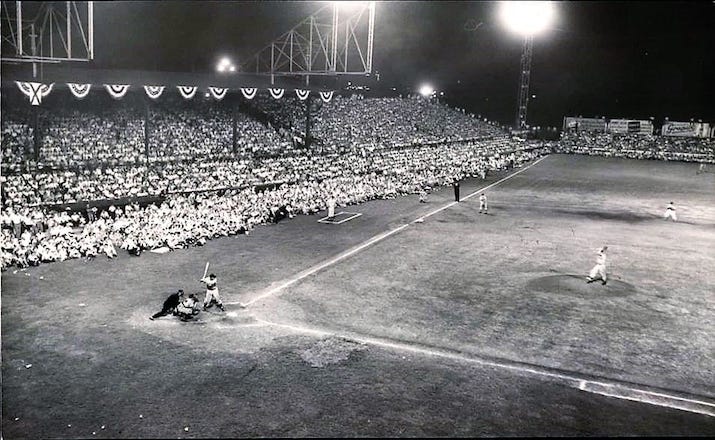Live From MLB at Rickwood Field: FOX Sports’ Negro Leagues Tribute Game Aims To Take Sound Way Back
A1 Joe Carpenter studied Ken Burns’ Baseball documentary for sonic cues
Story Highlights
Major League Baseball’s Negro Leagues tribute game tonight at Birmingham, AL’s Rickwood Field, a regular-season game between the St. Louis Cardinals as the home team and the “visiting” San Francisco Giants, will feature period uniforms and other historical elements to honor the legacy of the Negro Leagues era. The audio, too, will offer a reminder of the past.
The stadium, which opened in 1910, was home to the Birmingham Black Barons from 1924 to 1960. The tribute game will honor late Hall of Famer Willie Mays, a Birmingham native who began his professional career with the Barons in 1948 (and who died this week), and also celebrate the Juneteenth holiday.
Vintage Audio
FOX A1 Joe Carpenter, who is helming the audio for the game, notes that much of the production’s sound is dictated by the stadium itself, an integral part of the tribute production. The base paths of the 10,800-seat stadium, the oldest professional ballpark in the U.S. and now a National Historic Site, are flanked by concrete and steel stands, unique at the time and acoustically reflective. A tile-roofed cupola on the roof behind home plate provided space for the announcer and the press and is still in place. Thus, a certain amount of midrange ring might be expected.
“You have to just go with what you got,” says Carpenter. “Hopefully, it’s going to be hot and humid. The wood will be creaking, and the place will sound all kind of echoey and ghostly and cool.”
MORE FROM MLB AT RICKWOOD FIELD:
- FOX Sports Pays Tribute to Black Baseball With Special Broadcast in Birmingham
- FOX Sports’ Francisco Contreras and Tom Lynch Dive Into the Operations Plan
- MLB Renovation Highlights the Historic Venue’s Heyday
- MLB Network Eulogizes Willie Mays in Real Time During Tuesday’s MiLB Broadcast
- Negro Leagues Baseball Museum Connects Rich History to Tribute in Birmingham
Most of the microphones that Carpenter and submixer Joel Groeblinghoff will deploy are quite modern, although he’s open to deploying some vintage gear in the production, if only for visual effect. He notes the classic Shure 55 Super Dynamic mic used by actor Kevin Costner to open the Field of Dreams game that FOX broadcast in 2021. That particular mic is no longer available, however: once Costner autographed it after that game, it became its own trophy.
“We had a nice microphone from that era that suited the look we were trying to achieve,” he says. “It would certainly have looked out of place to have a microphone that didn’t exist in that time period. We might be able to do the same thing here.”
Putting in the History
The broadcaster intends to give viewers some semblance of what it was like to watch a ballgame on TV 70 years ago. Although the World Series was first carried in 1947 on the experimental station W2XBS (predecessor of today’s WNBC New York), the first radio broadcast of a Negro League game took place on Aug. 7, 1942; the first simultaneous radio and TV broadcasts of Negro League games were on June 6, 1948 — a doubleheader between the Cleveland Buckeyes and the Memphis Red Sox.
In Jim Crow America, the Negro Leagues built their own universe of fans and stars, a number of whom went on to play in the major leagues, including Mays, Roy Campanella, Jackie Robinson, Don Newcombe, Ernie Banks, and Elston Howard.
However, Negro League broadcasts were few and regionally scattered, subject to an equally segregated media landscape for broadcast and print. A few stations aired the scores of Negro Leagues games, but many didn’t bother even with that.
Baseball on television in general began to pick up steam just as the sport began integrating, in the early 1950s. The World Series and the All-Star Game were on TV, and NBC became baseball’s first exclusive network-television broadcaster — all in 1950. West Coast viewers could finally watch major-league games live during the 1951 postseason, and everyone could do so in color the following year (if they had the right TV set, which almost no one did at the time).
The technology progressed along with the sport. In 1956, CBS Sports director Frank Chirkinian devised an earplug with interruptible feedback (or IFB) to connect the announcer, director, and producer and thus smooth on-air monitoring. What may have been the first instant replay using videotape occurred on July 17, 1959, during a Yankees-game broadcast by WPIX New York. It came after a walk-off hit by Chicago White Sox right fielder Jim McAnany ended a no-hitter by Yankees pitcher Ralph Terry. Because the game was being videotaped, announcer Mel Allen asked director Terry Murphy to play a tape of the hit over the air.
Carpenter says he spent a considerable amount of time researching the sound and feel of broadcasts from venues like Rickwood Field. That included hours of watching Ken Burns’s 1994 PBS documentary Baseball and listening for key effects sounds, such as bat cracks.
“You can tell some of the bat cracks are real but most of them are Foleyized, put in in postproduction,” he explains. “For the game, I’m going to take a combination of automation and live Foley for the effects sounds. I’ll use the [Calrec] GPIs [general-purpose interfaces, which can be used to execute such tasks as fader moves and mutes triggered externally by, in this case, the video switcher] for the natural sounds of the game. But I’ll ‘live-Foley’ sounds to match what’s happening on the screen, using sound effects from online SFX libraries stored on a [360 Systems] Digicart[-5 deck]. It’s such a great and cool opportunity to have the artistic freedom to design the sound behind [Matt’s] vision of the game.”


